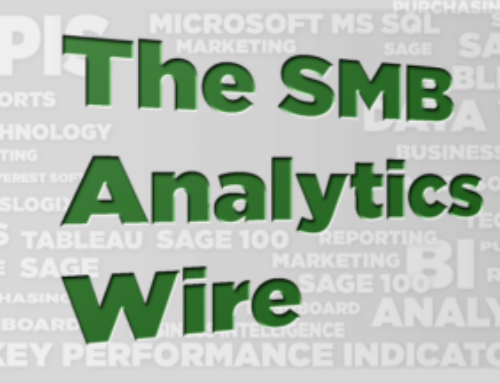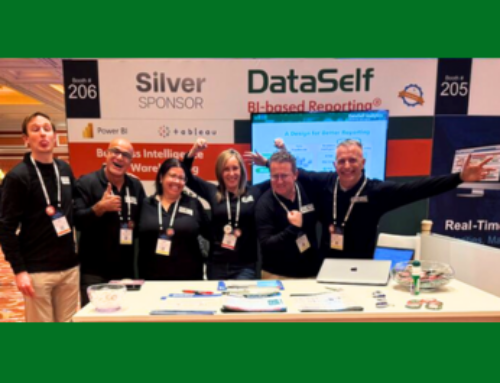What Makes a ‘Data Hero’?
 ‘Superheroes’ are figures like Superman or Spiderman who possess superior crime fighting abilities which they use to beat up the bad guys and benefit society around them.
‘Superheroes’ are figures like Superman or Spiderman who possess superior crime fighting abilities which they use to beat up the bad guys and benefit society around them.
Following that line of thinking, a “Data Hero” would be a person who possesses superior data analysis capabilities which they use to put an end to ineffective corporate decision-making and benefit the organization they work for.
Unlike a superhero who gains their abilities by some fluke of nature (e.g., being born on the planet Krypton or being bitten by a radioactive arachnid), becoming a data hero is a much more earthly endeavor. And it all begins with the data you’re analyzing.
Non-actionable vs. Actionable Data
There are two kinds of data: non-actionable and actionable. Non-actionable data is the stuff of audit trails it’s typically a summary of who’s done what . . . and when. But when it comes to becoming a data hero, it’s the actionable stuff that we’re interested in. (“Heroes” and “action” clearly go together!)
Actionable data is what enables employees to reach the right conclusions and take corresponding actions at the right time. These often include what to buy and what to sell; where to invest resources and where to cut back. Actionable data goes beyond transactions and is often used to gauge ‘performances’ – of people, products, and promotions. And actionable data often provides the insight needed in deciding whom to hire and whom to let go.
Beyond the data itself, it’s also worth considering the people who use that data. It’s tempting to assume that actionable data is the sole domain of managers and C-level executives; however the reality of today’s businesses is that decision-making has been (wisely!) distributed to all strata. From a CEO to a shipping clerk, decision-making is now found in every department and at every level.
As are the reports on which staffers base those decisions.
Where Standard Reporting Fails
And therein lies the problem: standard reports do not facilitate the decision-making process. On the contrary, they hinder it in the following ways:
- Difficult customization yields ‘partially-applicable’ results. Although many reporting solutions offer pre-configured templates, they typically require technical expertise to adapt them to one’s business. That results in reports that only partially meet any individual company’s needs.
- Limited drill-down prevents “decisive record” identification. Single level drill-down, limited slice and dice, and ‘keyword-only’ search routines hide critical performance factors and leave decision-makers guessing at the real reasons behind their results.
- Insufficient aggregates & KPIs result in poor analytics and limited forecasting. The data in apps like ERP and CRM is transactional; though ideal for data entry, it’s inadequate when it comes to aggregated trend analysis and KPIs based on advanced calculations and formulas.
- Excessive runtime disables real-time decision-making. With traditional reporting, reports often take hours (or days) to execute. Decisions are often based on old data and are (as a result) faulty. Further delays are caused by the inability for users to schedule and run their own reports.
- Decentralized metrics result in contradictory data points. Because key performance indicators are defined within each report, their calculations can vary, giving contradictory results within reports using the same metric. Decision-making is reduced to guesswork on which metric is ‘right’.
Fortunately — unlike superheroes whose superpowers come from within, the superpowers of a Data Hero come from without – via a technology called BI-based Reporting.
BI-based Reporting addresses the failings of traditional reports. With BI-based Reporting, you get:
- Reports that are easier to design. Using simplified data models, non-technical staff can create & customize their own reports via a user-friendly drag-and-drop method. Additionally, a natural-language query engine allows report creation via a Google-search like interface.
- Superior analytics. Leveraging the industry’s top business intelligence engines (Tableau and Power BI), users employ tools like infinite drill-down and dynamic slice-and-dice to go beyond the details of what a business is doing to how it is doing.
- More strategic and predictive results. ERP, CRM, and related data sets are cleansed & optimized via an ETL (Extract, Transform, & Load) process. This executes thousands of formulas and calculations to create smart metrics and KPIs which are then stored in a SQL data warehouse for superior analytics.
- Lightning-fast production & delivery. A library of over 8,000 reports and dashboards provide over 80% of all needed analytics on day #1. Reports run in under ten seconds and users can schedule the automated production and distribution of reports via email.
- A clearer picture of the business. Report calculations and formulas are defined on a centralized server, ensuring that all reports that use a specified metric use the same calculation. This ensures ‘a single version of the truth’ and an unambiguous picture of the company’s performance.
The fact is, reporting that’s not BI-based puts decision-makers in a precarious position. Their decisions become guesswork based on old and incomplete data presented in a rigid (and yet often contradictory) manner.
BI-based Reporting is the ‘superpower’ that transforms decision-making staffers into a team of data heroes.




